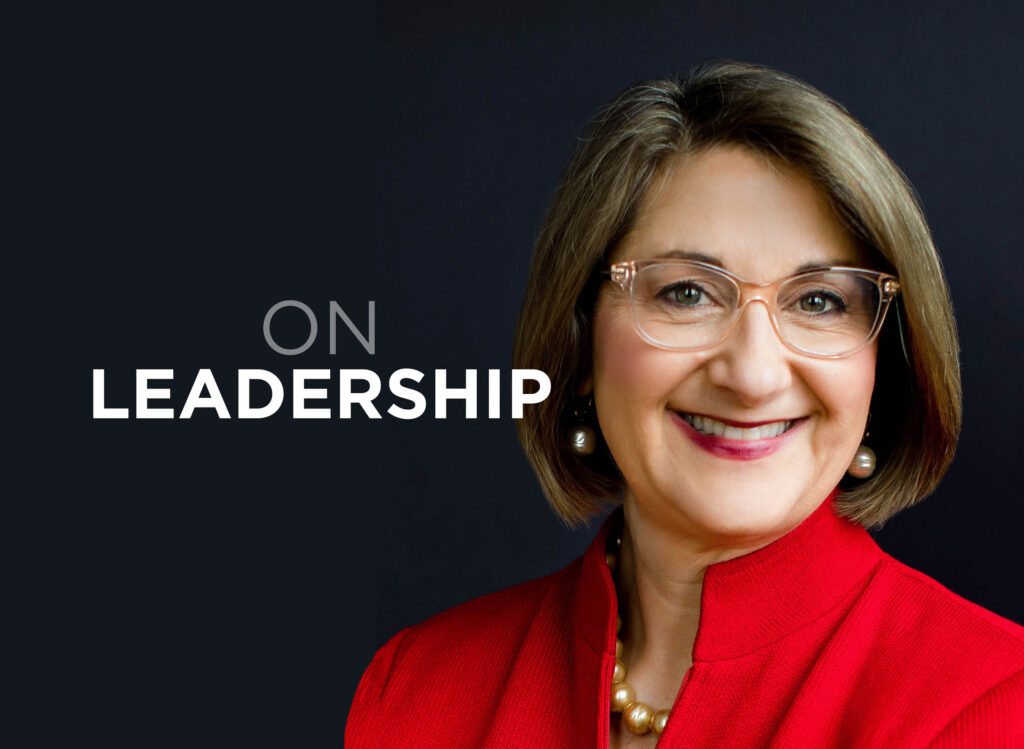On Leadership: Leading when you don’t have all the answers

When I was younger, I assumed that leaders knew what they were doing. I worked at various companies where strategy or plans were not obvious or not communicated well, and I was annoyed when my bosses didn’t have it all figured out. Now, having led organizations, I understand clearly that leaders never have all the answers – and that’s because life, the economy and business are constantly changing. You can have a perfectly good vision and roadmap for your organization, but chances are, something will happen and then you have to figure it all out again – all while your team is waiting for guidance.
“It can be easy to assume that a sign of being a great leader is having all the answers; however, often the opposite is true,” says a Forbes article on this topic, “No leader knows everything, but great leaders are always willing to learn and grow in their knowledge, and often have ways of finding the answers they need.”
A recent Harvard Business Review article says today’s leaders increasingly face four challenges: volatility, uncertainty, complexity and ambiguity – or VUCA, an acronym first used by the U.S. Army War College. These VUCA challenges are simply the reality of business today, says the article. “But they’re not new. They’re intrinsic to markets, sales, manufacturing — and life in general.”
Being a leader can be hard if you feel you always have to have the answer and be right on demand. That’s unrealistic and creates undue pressure and stress. It’s counterproductive for you or your team to expect that you will have all the answers all the time. However, as a leader, your job is ultimately to provide your team with direction. So even if you don’t have all the answers, it is incumbent on you to quickly assess changes or situations, figure out the answers and communicate them to your team.
Here are some best practices to get you moving toward solutions and for bringing your team along even when you don’t know all the answers.
- Be honest. “Being transparent about the fact that you do not have the answer but you are actively researching one gives everyone a sense of peace in knowing you are still leading them,” says the Forbes article. Being candid – without making excuses – also conveys a sense of relatability. After all, no one has all the answers, and your team may be more willing to give you some time and grace if you are upfront with them.
- Communicate. As you navigate challenges and uncertainty, frequent communication is key. The more you can tell your team about the challenge, the process, and even the considerations you’re having to look at to solve the problem helps them understand the difficulty or what is involved in resolving the situation. Remember to communicate in multiple ways: in writing, verbally and in team meetings, as people absorb information differently and benefit from hearing the message in several formats.
- Work through the challenge. If you are not sure of the answer, use all the resources at your disposal: ask others, conduct research and lean on your team. Other leaders or mentors can be sounding boards. You can turn to economic data, reports or outside experts. And you can and should reach out to your own team members, who may have valuable expertise or perspective that can help you find solutions that work.
- Update your team. Even if you have communicated once, keep your team apprised of what you are doing to find answers. In the absence of regular communication and updates, it is human nature to draw conclusions – and if you don’t update your team, they will often assume you don’t know what you’re doing, that you’re not working on the issue, or you’re not paying attention to their needs. You don’t have to have all the information on hand to update your team that you are still working on a problem. You can still share the research you’re doing, the process you are employing or provide estimated timelines. Giving frequent updates can build trust while you are figuring things out.
- Pose questions and use data. The HBR article asserts that decision-making doesn’t always improve with more data. “When life is stable and transparent, more data leads to better decisions,” the authors say. “But when life turns choppy or murky, data gets fragile and elusive. More data is not an option — and to seek it produces passivity, mission creep and hesitation.” You may not be able to get all the information you need, so practice trusting your judgment, drawing on past experience and using active questioning to help you get to the priorities.
Living and leading in a VUCA world. Today’s marketplace is changing rapidly. Markets, technology, consumer preferences, supply chains and the economy are all evolving and changing. As a leader, you will never know all the answers, and it is unrealistic to put that kind of pressure on yourself. Great leaders are willing to admit they don’t know everything and then work quickly to find the best answer – and to communicate along the way with their teams. And the best leaders know as soon as they find the answer, the situation will probably change again, because that is just how life works. ν

Suzanna de Baca
Suzanna de Baca is a columnist for Business Record, CEO of Story Board Advisors and former CEO of BPC. Story Board Advisors provides strategic guidance and coaching for CEOs, boards of directors and family businesses. You can reach Suzanna at sdebaca@storyboardadvisors.com.






